 Food, glorious food! What better sight for a tourist than endless displays of food, presented at its best by farmers and marketers, tempting and at the same time healthy. In the right setting, you can even put a "halo of health" on a glazed donut—but only if it's handmade or traditional.
Food, glorious food! What better sight for a tourist than endless displays of food, presented at its best by farmers and marketers, tempting and at the same time healthy. In the right setting, you can even put a "halo of health" on a glazed donut—but only if it's handmade or traditional.
Seattle's Pike Place Market is one of the few U.S. markets to make it into the guides and recommended attractions lists. In Europe, where the market tradition has stayed strong, it features in all the guides, and some of the big ones, like La Bouqueria in Barcelona, are top attractions. It's a shame that more aren't in the U.S. Part of the reason is that here the tradition of farmers' markets and public markets hasn't been kept up as it has been elsewhere, and Pike Place, opened in 1907, is actually one of the oldest farmers markets in the U.S., because so many older ones are gone!
There are older markets that operate weekly here and there, and full-time markets in a few other places, but many cities have just begun to revive the idea. In New York, there's now a 20-year-old program of encouraging Greenmarkets in different parts of the city several days a week, but nothing like Pike Place's everyday show. It's a shame there are so few; they give farmers a market for their crops, and give consumers a chance at really great local produce and seafood.
Often farmers grow varieties just for these markets—luscious but not good travelers; so many of the food varieties we eat were developed for longer shelf life or easier shipping.
And even Seattle came close to losing Pike Place in the 70s, when the area was proposed for "redevelopment." Public protest put an end to that and gave the market a new lease on life. That's happening in more places these days; local interest in Washington D.C. saved the Eastern Market; its role has changed but it is still a place for fresh produce and more.
The part of the market most people see is the tip of the iceberg. Lots of food, and an area for crafts and the like on the main level...but the market is actually built on the edge of a hill, and has several floors of buildings under it, housing shops, apartments and restaurants. Here's a picture of the hillside before the market was built.
Fruit and vegetables are the most colorful part of Pike Place, but it's also an incredible showplace for Pacific Northwest seafood and fish, including many varieties you'll never see on the East Coast including the giant clam relative called Geoduck and pronounced gooey-duck, and many varieties of salmon, identified down to the river they spawned in. These are my favorite: I'm not a salmon eater, but this is the exception!
The market is not without its sense of humor, either: Some of the fishmongers fill idle time amusing visitors by throwing large fish around with an amusing patter. An occasional joke creeps into the fruit and veg world, too: Note the green (plastic) guardian of the cherries.
And even a bad pun or two:
You'll find a few more pictures in the slideshow below. For a lot more about fascinating Seattle, have a look at this Dr. Fumblefinger BLOG here on TravelGumbo!



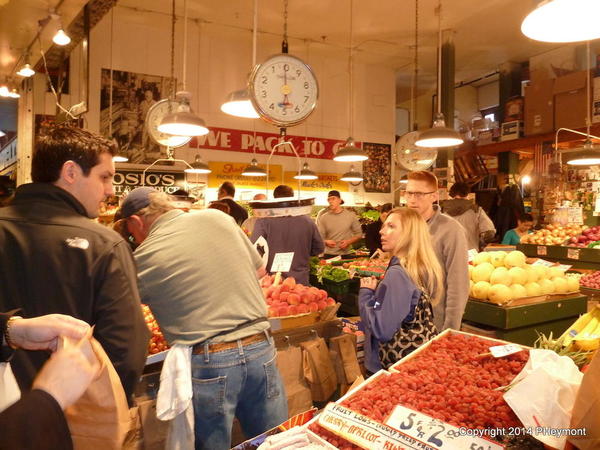
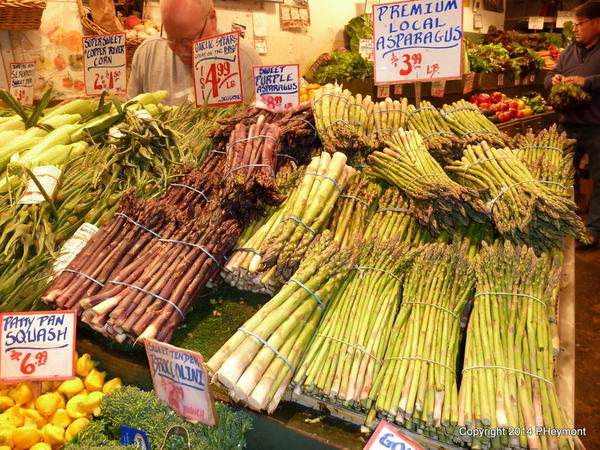
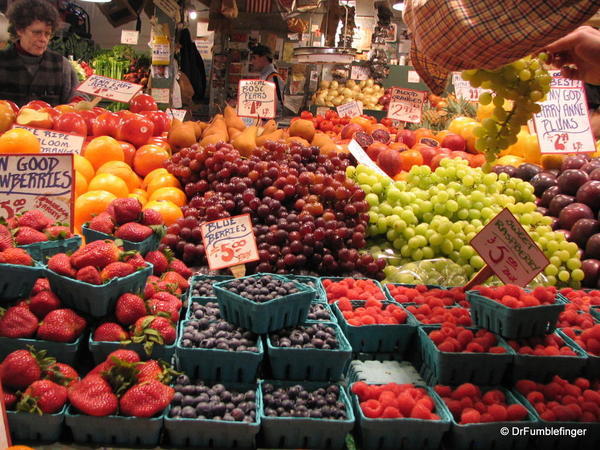

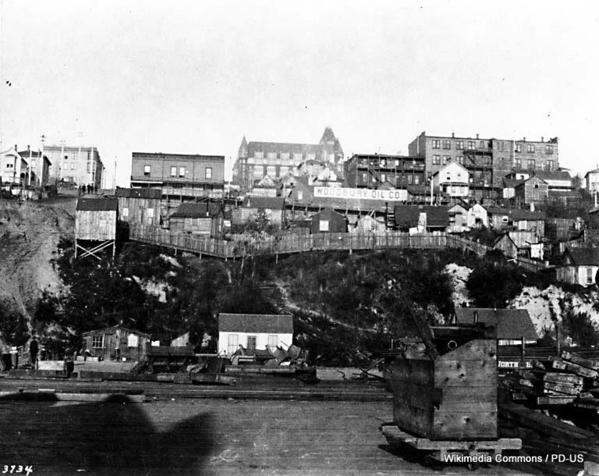


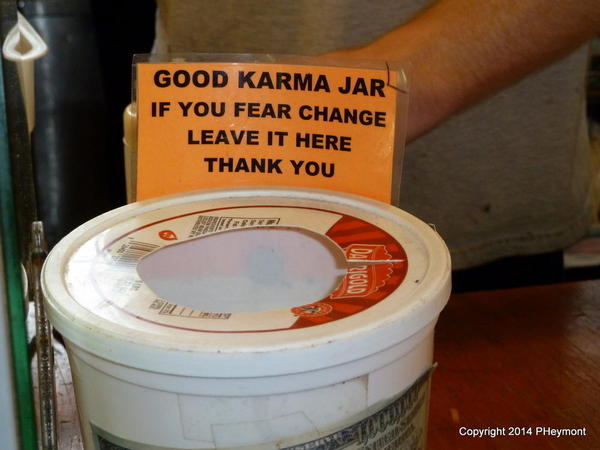


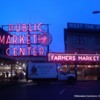




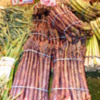

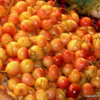

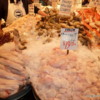


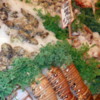
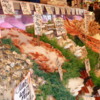


Comments (9)